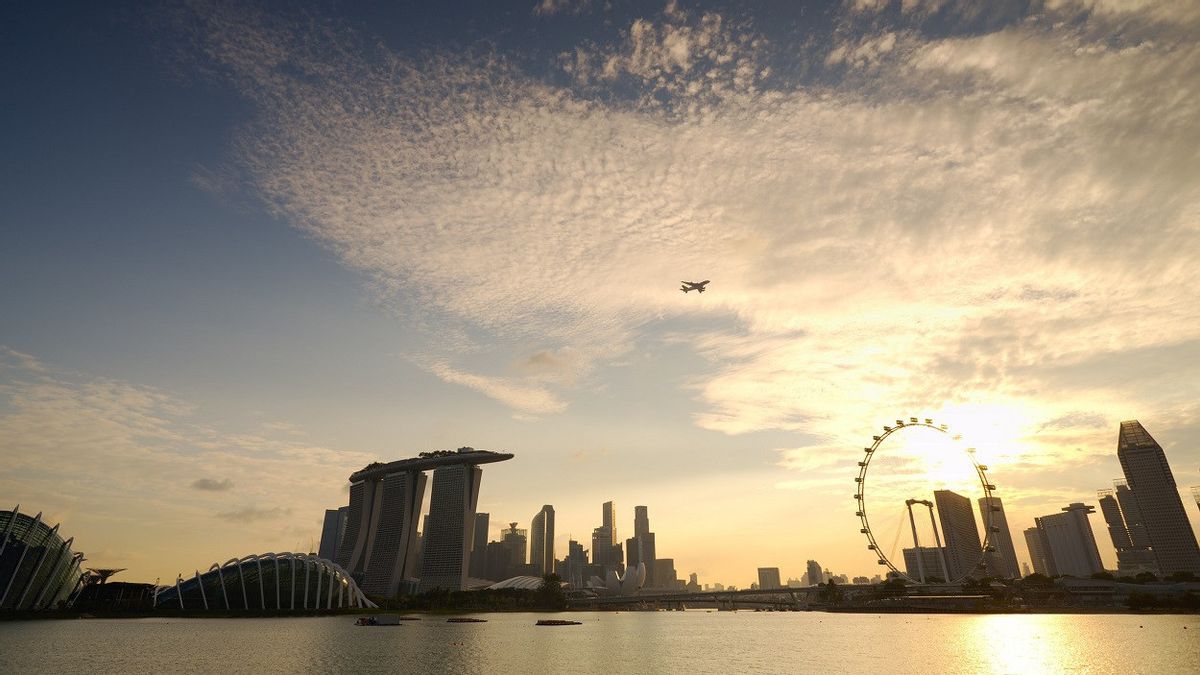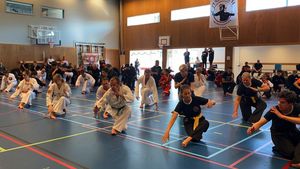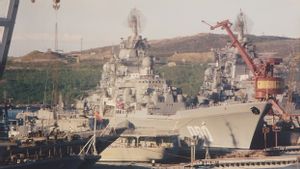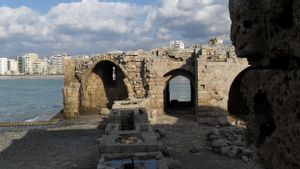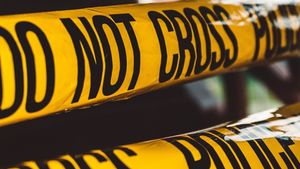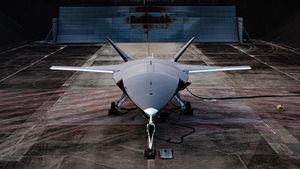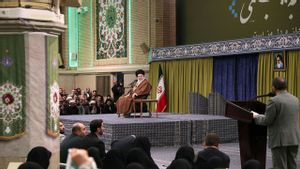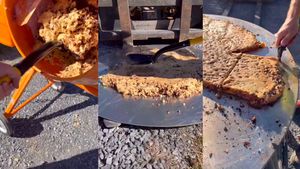JAKARTA - The time is past 22.30 on Monday night, October 4, when the bustle is still visible along Aviation Park Road which leads to the taxiway of Changi Airport, Singapore.
Exactly at 11 pm, the road along about 2 km was blocked. The lampposts on the side of the blocked road section have been removed, giving access for Singapore Airlines (SIA) giant Airbus A380 aircraft to be towed on their final trip to the Changi Exhibition Centre, where they will be dismantled.
This is the first time SIA has removed its superjumbo fleet locally. The aircraft, registration numbers 9V-SKH and 9V-SKG, were among the seven A380s that SIA had announced in November last year to be retiring, amid a first-half net loss of S$3.5 billion as passenger numbers fell nearly 99 percent. due to the COVID-19 pandemic.
The planes were delivered in May and June 2009, according to data from the aviation website Planespotters. Meanwhile, the five A380s previously discontinued by SIA, all of which had been in service for about a decade, were flown overseas before being stockpiled or released.
"From my point of view, normally planes are separated overseas," FlightGlobal Asia managing editor Greg Waldron told CNA as quoted Oct. 5.
"This is a large enough industrial operation to separate aircraft," he continued.

An SIA spokesperson told CNA the decision to cancel the A380 locally was based on a variety of factors, including the expertise of local and international vendors, closure of international borders, and the cost of dismantling the aircraft.
The road closure notice on the Land Transport Authority's OneMotoring website said the crane operation was organized by Hunt Way Management Consulting Services.
According to its website, Hunt Way is a project management specialist in areas such as construction engineering, repair and redecoration, and interior repair. It has also worked with aerospace maintenance, repair, and overhaul (MRO) organizations.
"Generally (aircraft scrapping) is a pretty specialized operation. You really need to know your way around the plane, how to do it safely and correctly, and also to maintain value, like you don't want to damage the components that you're going to sell later," explained Waldron.
"SIA Engineering Company, which is the MRO for SIA, is a very experienced MRO company. They have maintained all kinds of aircraft for years, they know their way around the A380. So someone like that will definitely have the capability."
While roads were closed to traffic, cyclists, and pedestrians, a small group of aviation enthusiasts found a way to get a glimpse of the unprecedented operation. About 10 people waited near the east end of the blockade, armed with tripods, DSLRs, and zoom lenses.
One of them was polytechnic student Yeong Zi Feng, who showed up at around 11:30 p.m. with his camera. The 18-year-old had been touring the area since 10 pm to find a good spot.
"The A380 is a big plane, so it's not like you can see this kind of thing in every country. It's pretty good to have a photo of it too," he said.

With him is fellow planespotter Teng Joon Seng, 18 years old. The two met while taking pictures of the plane, before coincidentally taking the same flight management course at the Temasek Polytechnic.
Mr. Teng said many fans wished to photograph every A380 in SIA's fleet and mark their unique registration number. "We hope to complete the collection," he added.
What happened next was a lot of standing and waiting. It was until about 01:15 when a distinctive shape appeared in the distance.
It was the first A380, with the engine and nose cone removed. SIA's livery has also been removed, except for the strip that still shows part of the airline's name. The A380 is positioned diagonally across the street before being pushed back into the sprawling outdoor complex.
Just behind this A380 is the SIA Boeing 777-200ER, which will also be scrapped. The second A380, which was pointing backward, was the only one that got into the nose first.
Parts
Usable parts from the disassembled A380s will be stored as spare parts to maintain the A380 fleet in operation today, an SIA spokesperson said. At the time of announcing the retirement of seven A380s, SIA operated a fleet of 19 superjumbos.
Suitable aircraft materials, such as parts of the fuselage, cabin windows, overhead compartments, seats, buoys, soft furnishings, and linens, as well as kitchen utensils such as carts and shelves, will be reused for SIA's recycling initiatives.
This initiative, launched in August, provides spare parts and materials from retired SIA commercial aircraft to Singapore-based organizations and select global retail brands.
“These parts can be recycled and reused to create unique retail and artwork products, and will also be used to support educational institutions, artists, and people with disabilities,” SIA said in a press release about the initiative.

Meanwhile, Waldron says there is a lot of value in old planes, from engines to parts.
"The first thing they will take off is the engine and of course it can be used on another A380 or it can be used for spare parts," he said.
"You go into the different components and all the different systems, and depending on how much this has been used, it can also be reused on other aircraft as well. Even down to a coffee machine-like level."
Less efficient
SIA became the first airline to launch the A380 service amid the fanfare in December 2007, but returned the first two aircraft to the German financier when the lease expired about 10 years later.
An SIA spokesman did not disclose the lease or purchase arrangements for the two A380s that would be canceled.
While many have praised the A380's quiet and spacious cabin, demand for the 544-seater has fallen as many airlines are dropping the industry's largest four-engine plane in favor of a smaller twin-engine plane that is more efficient and easier to load.
"It's a very large plane, so airlines have a hard time filling all the seats. And also basically it's only suitable for very specific routes, like between major hubs. You can't put it on a smaller route because the plane is too big," he said. Waldron.
“Another issue that has occurred is that competing aircraft such as the Boeing 777-300ER, and now the Boeing 787 and Airbus A350, have very good seat costs from an airline perspective. So the operating costs of other aircraft are significantly lower, and that's the downfall of the A380."
SEE ALSO:
However, according to the air travel website Mainly Miles, SIA has committed to equip the remaining 12 A380s with new cabin products, an indication that they could return to service as demand increases. Some of these planes are still parked at the aircraft storage facility in Alice Springs, Australia.
"(The A380) remains very popular with passengers, because it's big, comfortable, and very quiet, so it's definitely an iconic aircraft. But sadly, it didn't work out for Airbus," added Waldron.
The English, Chinese, Japanese, Arabic, and French versions are automatically generated by the AI. So there may still be inaccuracies in translating, please always see Indonesian as our main language. (system supported by DigitalSiber.id)
